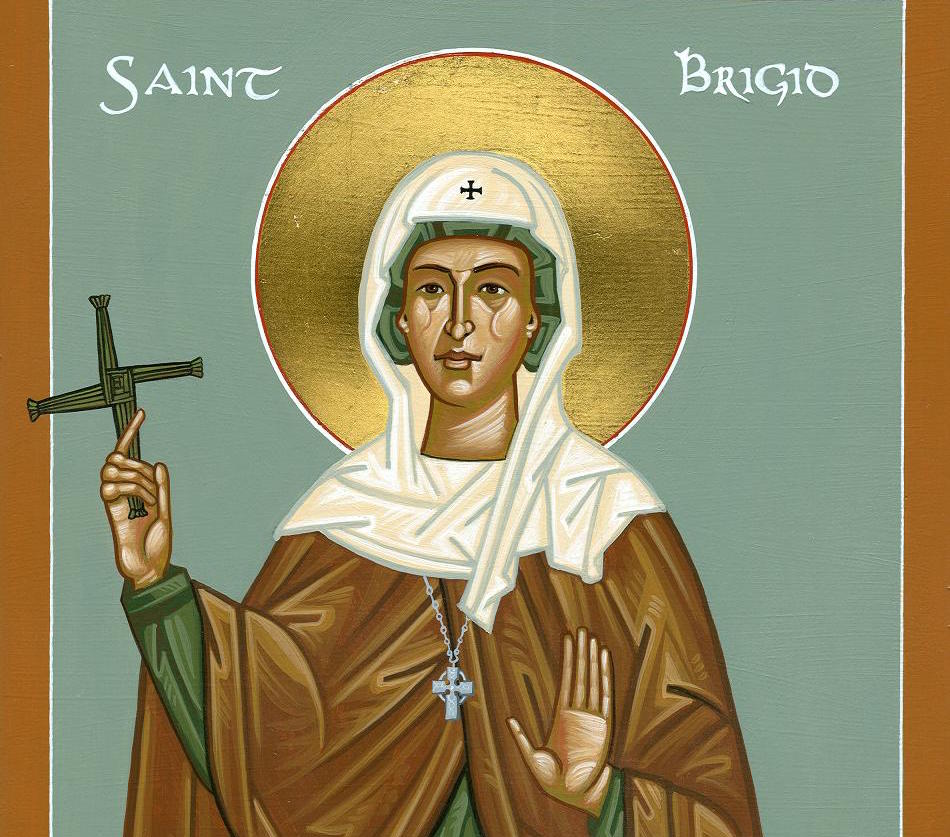It’s been a long and drawn out January. Though the weather has been mild, it still felt twice as long it should be. It just kept dragging on. I know it’s not just me, as many of my friends have also been complaining… So, it was really welcome to wake up and find that it was finally February and to celebrate the lovely feast of St Brigid.
Like many Christian holidays, St Brigid’s Day started out as a pagan feast day: Imbolc, which is the halfway point between the winter solstice and the spring equinox. In the Celtic calendar it is followed by Bealtaine in May, Lughnasa in August and Samhain at the end of the year. In Ireland, February 1 is associated with the return of Spring. This confused me when I first moved to West Cork, as I had been taught as a child that Spring begins on March 20. Indeed, in most of the countries I lived in, February was still frozen and icy, and you had to wait until the end of March to feel the change of season. That Spring comes so early it is definitely one of the joys of living here.
Is there any other time of the year that is more welcome? Though I cherish the long summer days, the coming of Spring is the when I feel most grateful (probably because it holds the promise of Summer!). We have been having some very fine days this Winter, but regardless of the weather, after St Brigid’s day there is no denying that Winter is waning and Spring is on its way. A quick walk around the garden makes it very obvious. Our camelia jump-started the season and is now in full bloom. It is so lovely to fill a vase with a huge bouquet of bright blooms, the pink petals offset by the vibrant yellow stamens. The daffs are poking out of the ground, heralding a yellow ribbon of flowers down the drive in a few weeks’ time, and under one tree a large patch of snowdrops is already unfurling tiny white blooms. The trees we planted in the back all have little buds on them, and even the rhubarb is sprouting. The real treat however is a tiny patch of wild crocuses that I look out for every year. Once I see them, I know that everything is waking up and the gardening year will begin again…
There’s also no denying that the days are getting longer. Soon we’ll be enjoying a “fine stretch in the evening”. It really feels like a weight has been lifted from my chest, allowing me to lift my head and look around after dozing by the fire for the last two months. Nothing cheers me more than seeing the light and life come back to the land.
The Goddess Brigid was the daughter of Dagda, patriarch of the Tuath De Dannan. Both Brigid and her father were associated with Spring, fertility, healing and poetry. Fast forward to the fifth century when the King of Leinster’s daughter, becomes a Christian and sets up Ireland’s first monastery in Kildare, at a site of that is said to have been dedicated to the Goddess Brigid.
St Brigid, as the King’s daughter became after performing a number of miracles, is today one of Ireland’s patron saints. She is still venerated, though some of the practices such as leaving out a scarf on the eve of her feast day (to be blessed by the saint and used for healing), or making dolls called Biddys in her effigy, are not as popular anymore. However, the distinctive Brigid’s cross is still seen in many homes, or worn on a necklace. I love the St Bridgid’s cross and still have the ones my girls made in school hanging in the kitchen.
This week a petition on the Internet caught my fancy. It was a call to make Brigid’s day a national holiday, and I think it is a really good idea. Not only would we have a holiday that celebrates a woman (long overdue!) but also Brigid’s embodiment of Spring and renewal of the Earth, of fertility and healing, of hope in the future, seems like just what we need in these difficult times. Hail Brigid!





